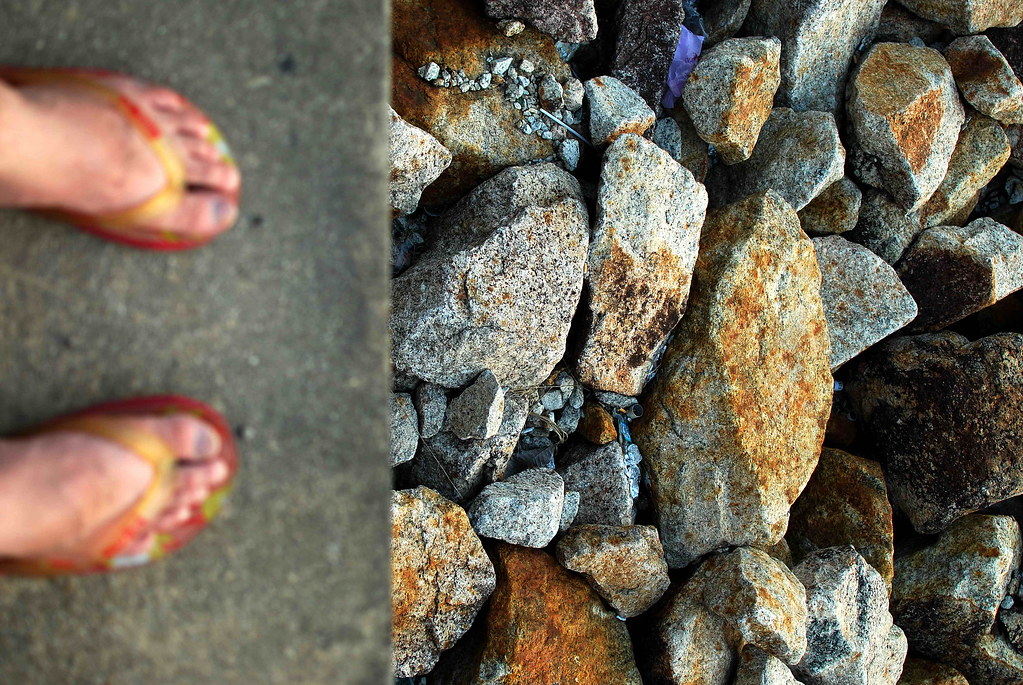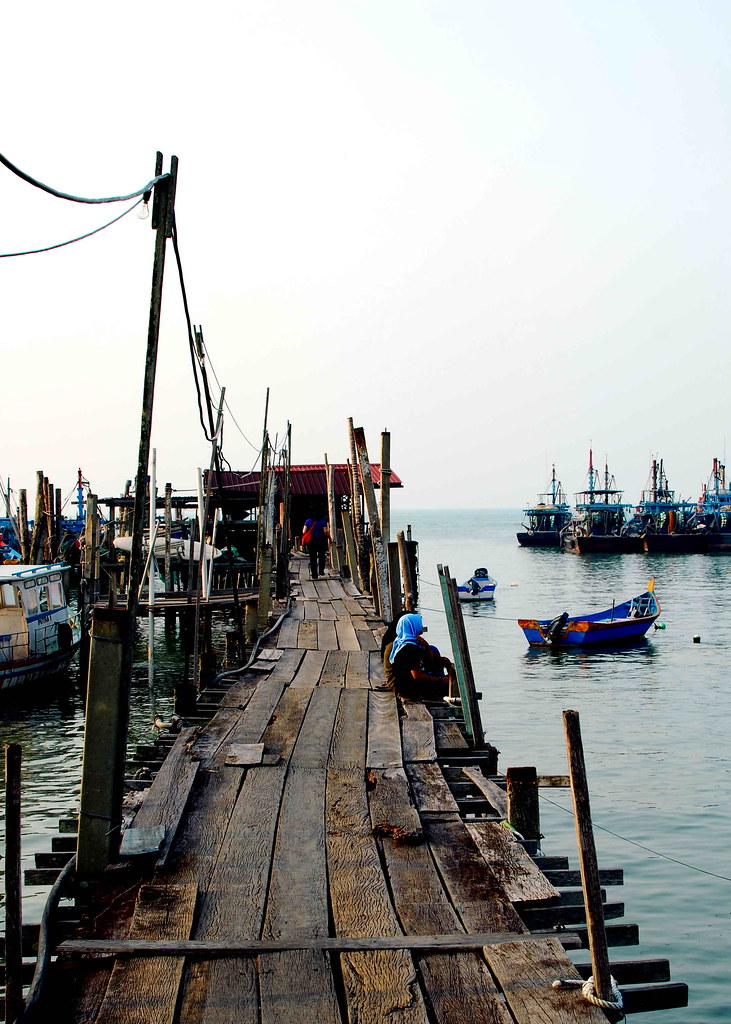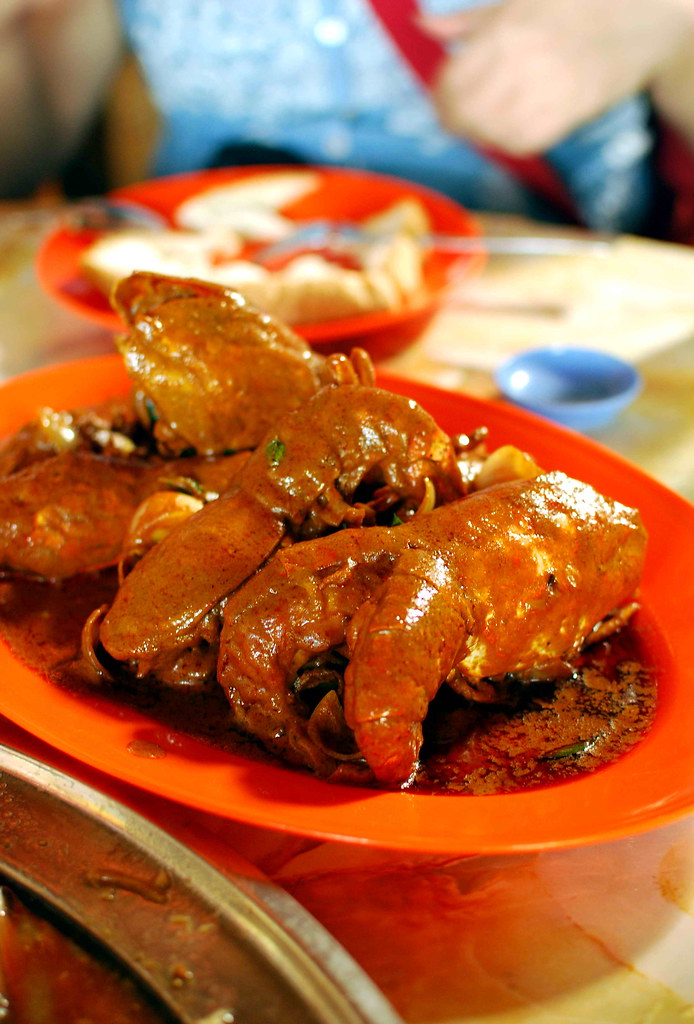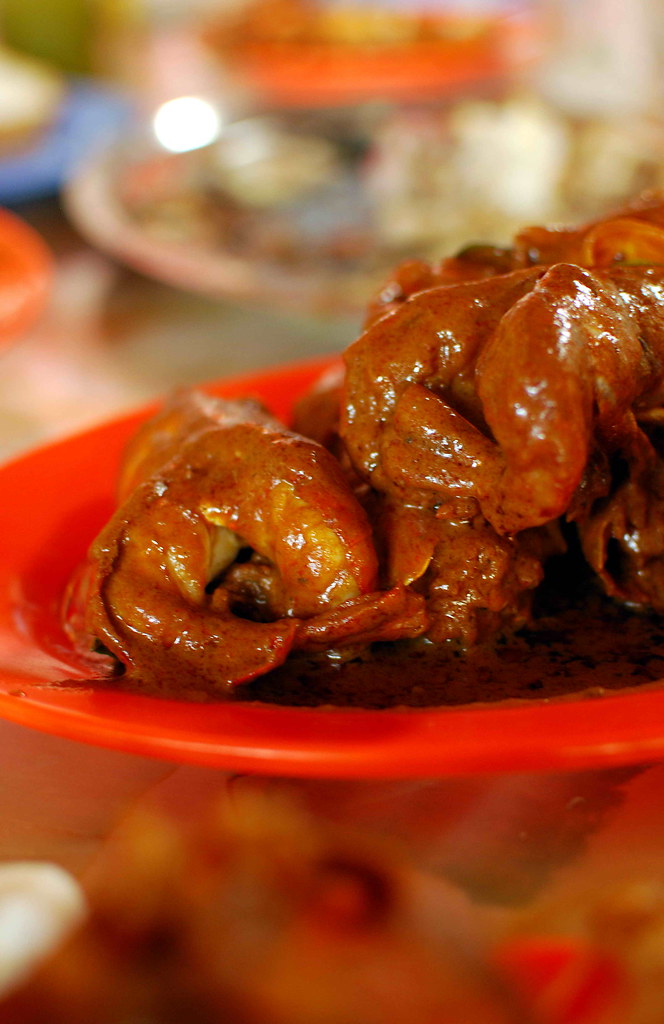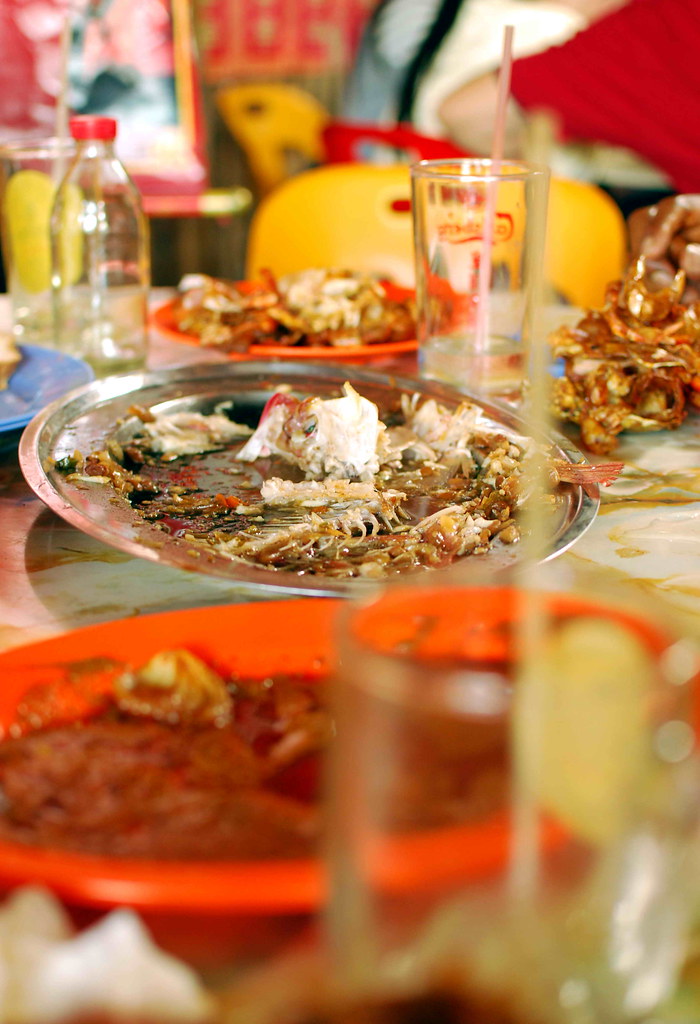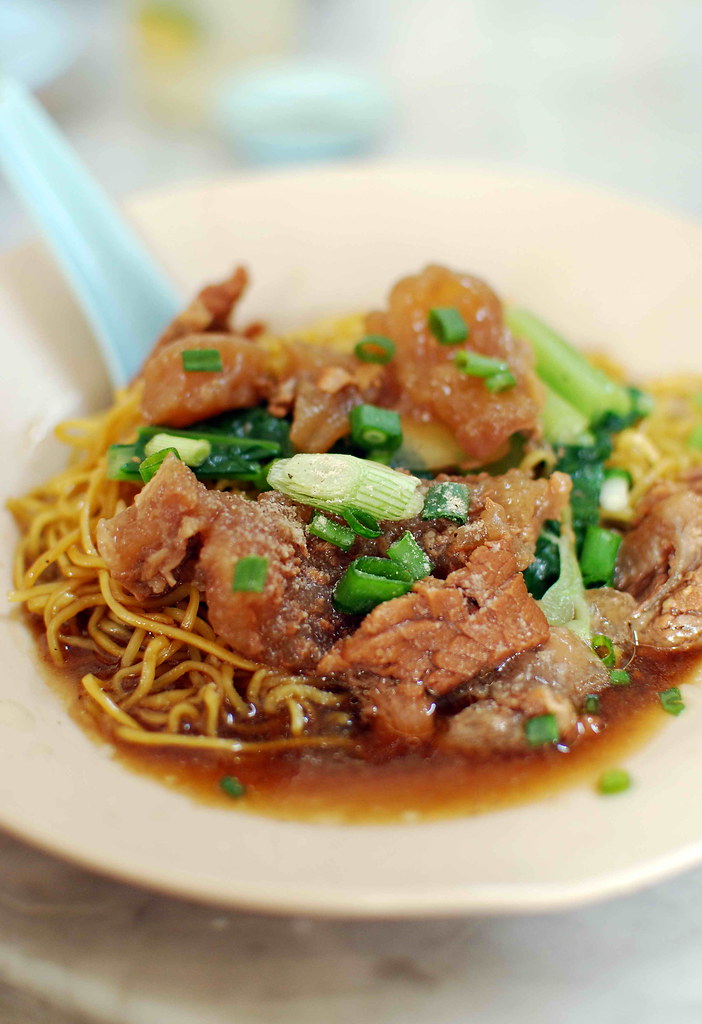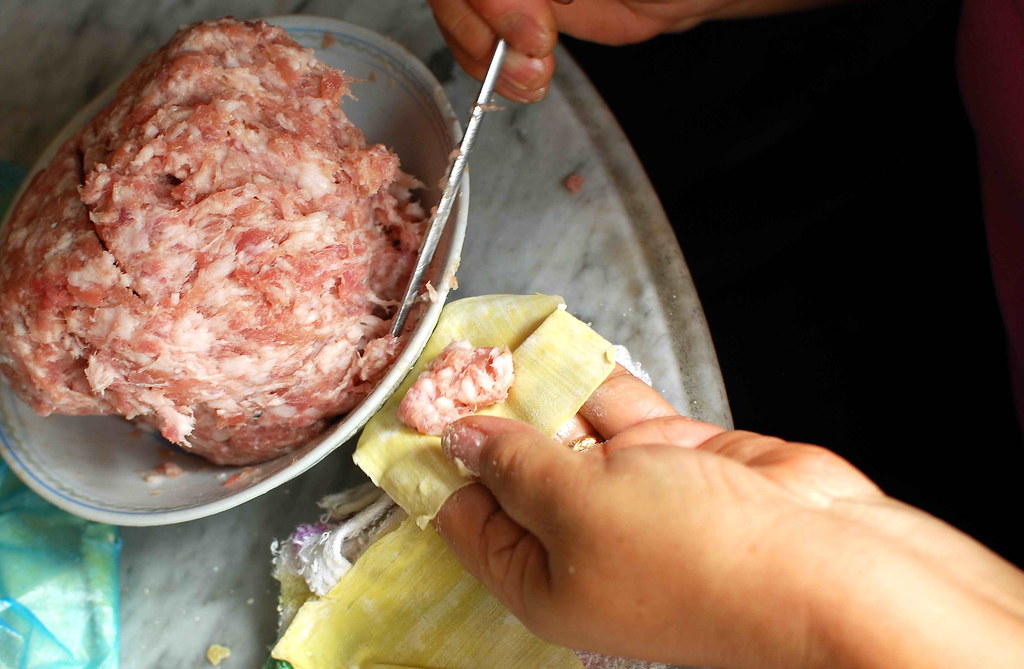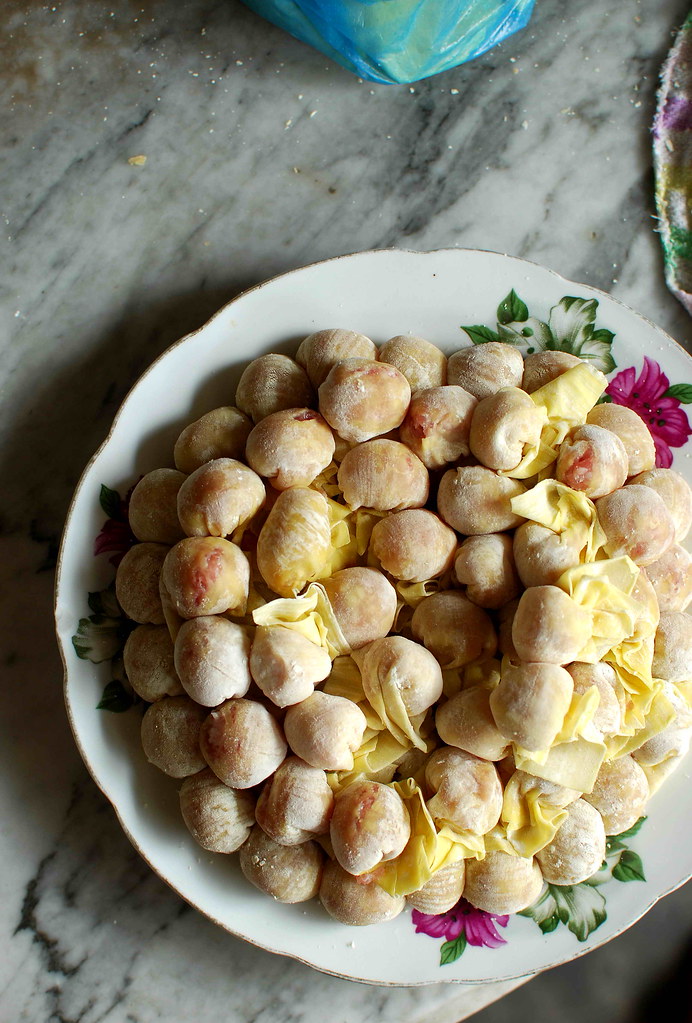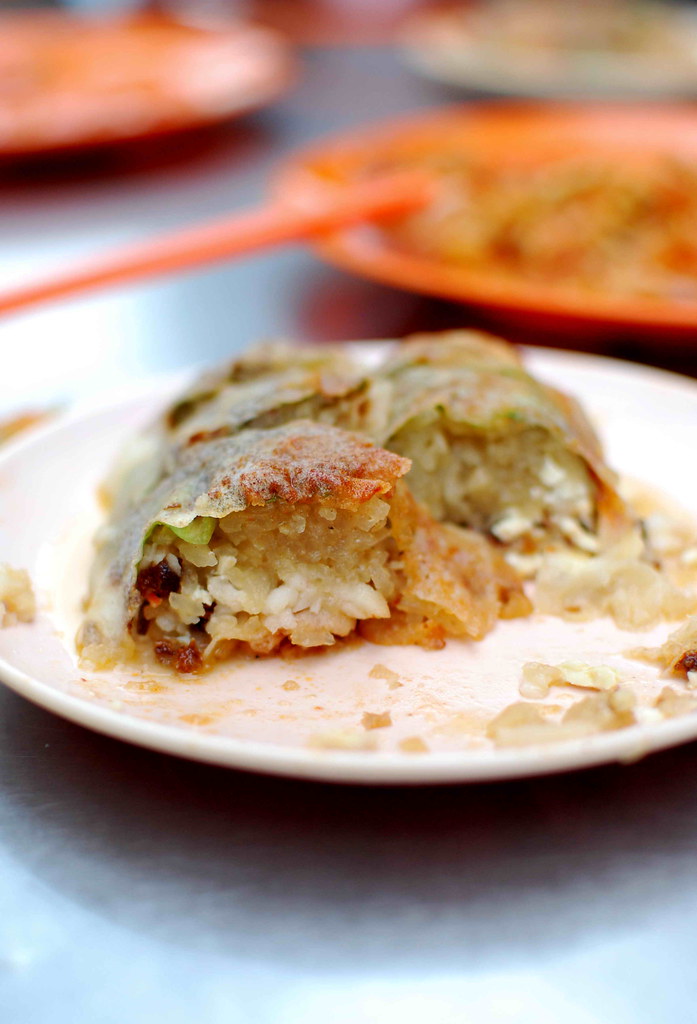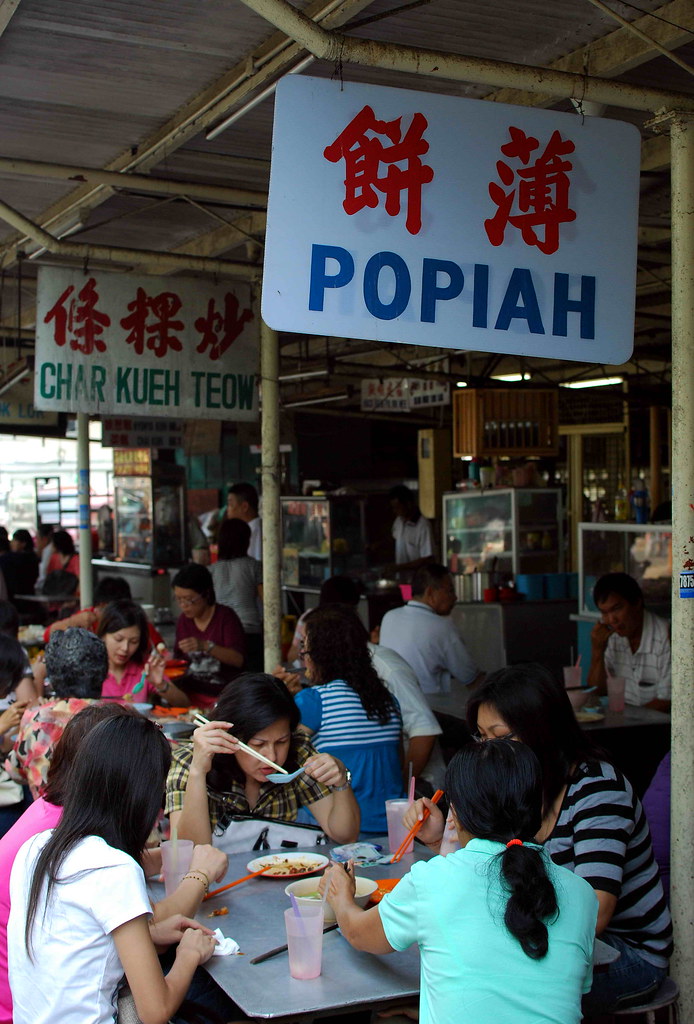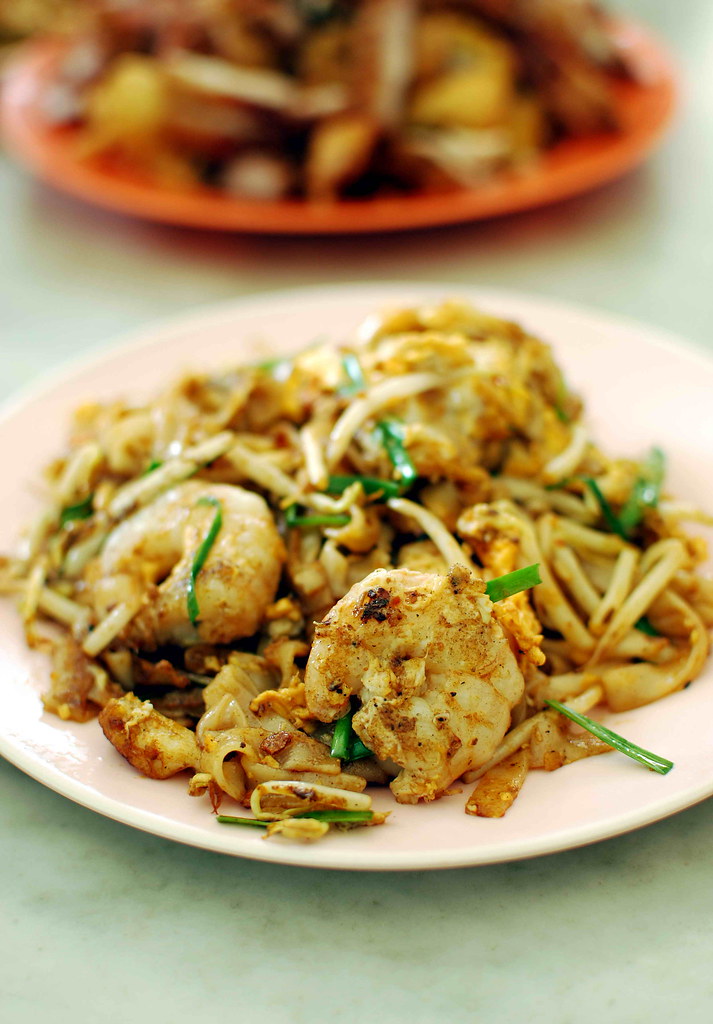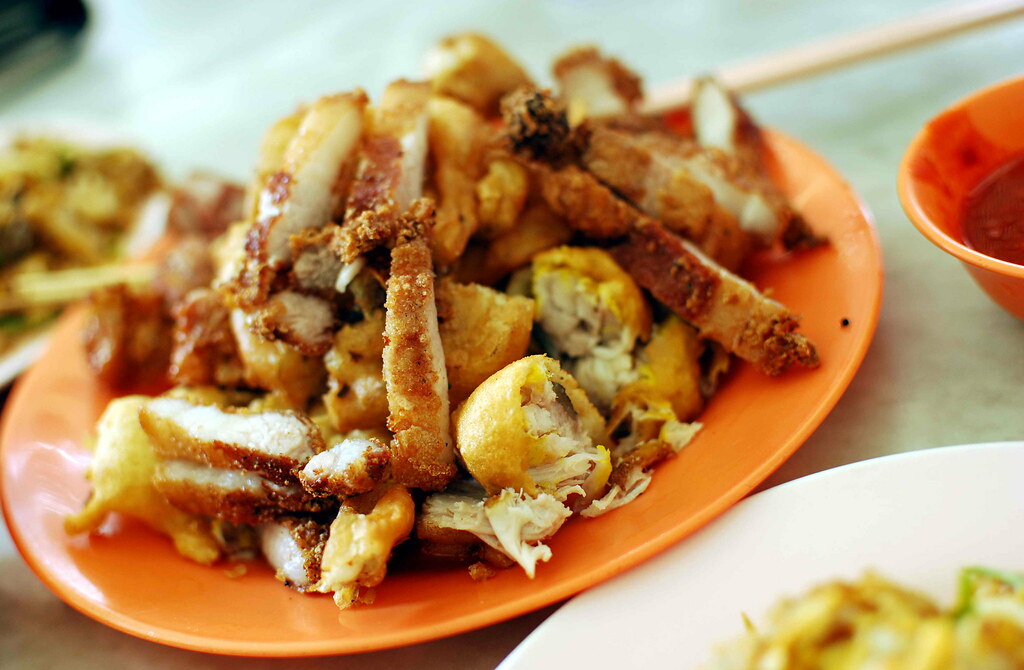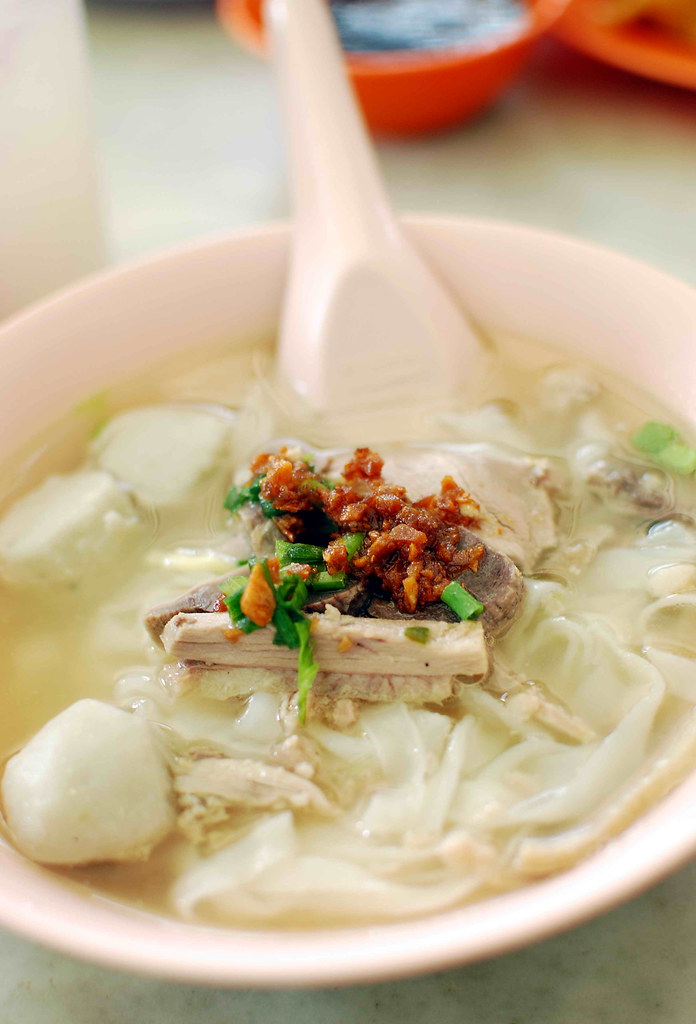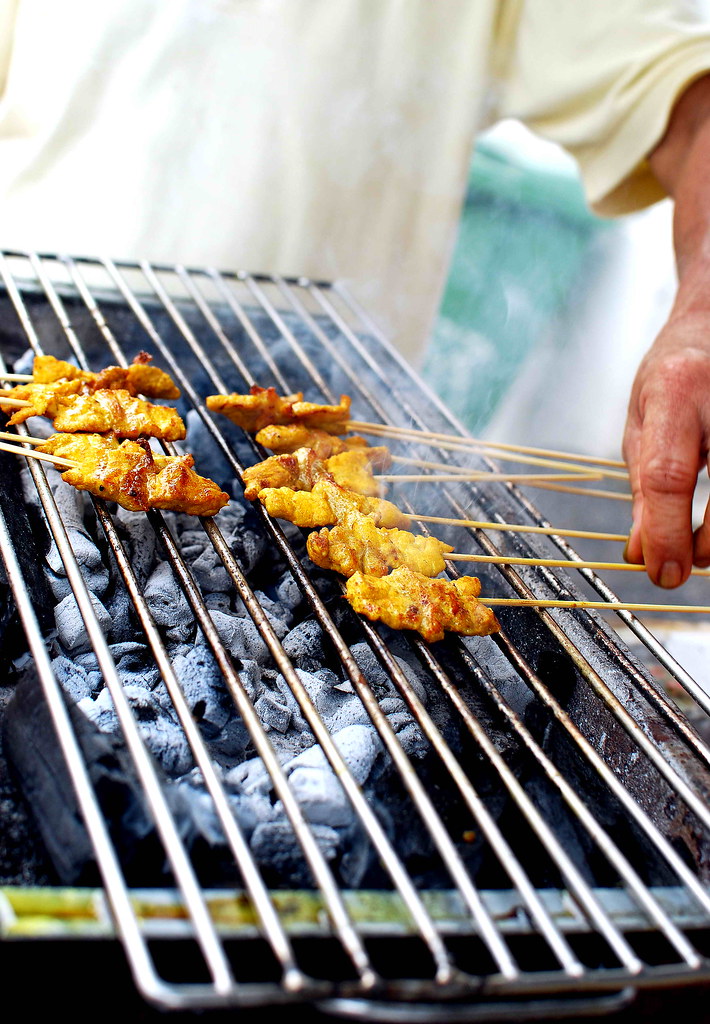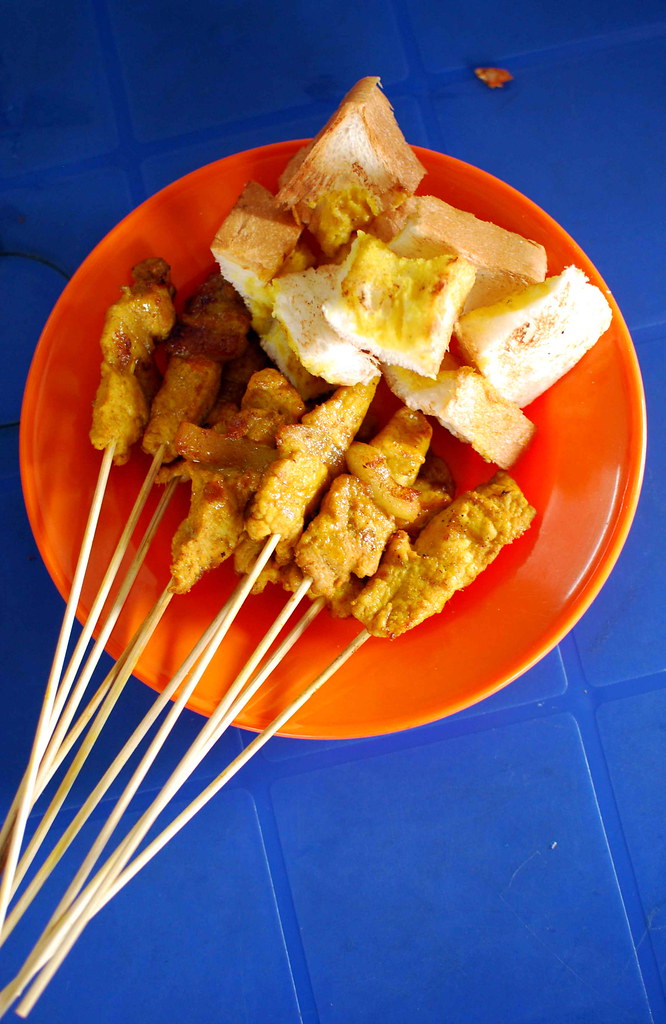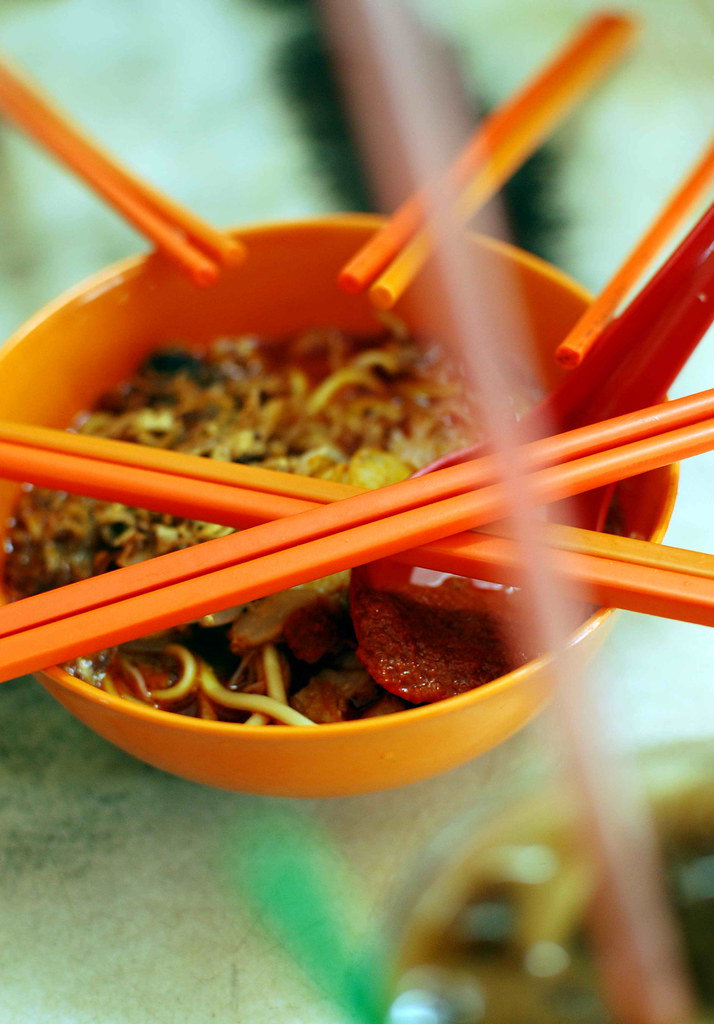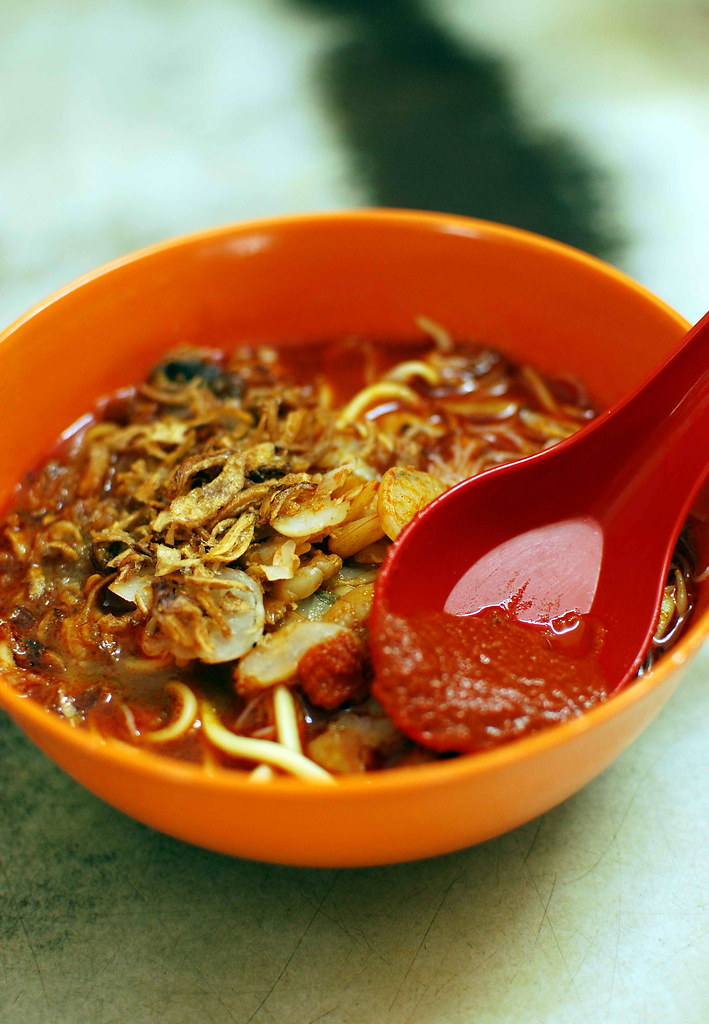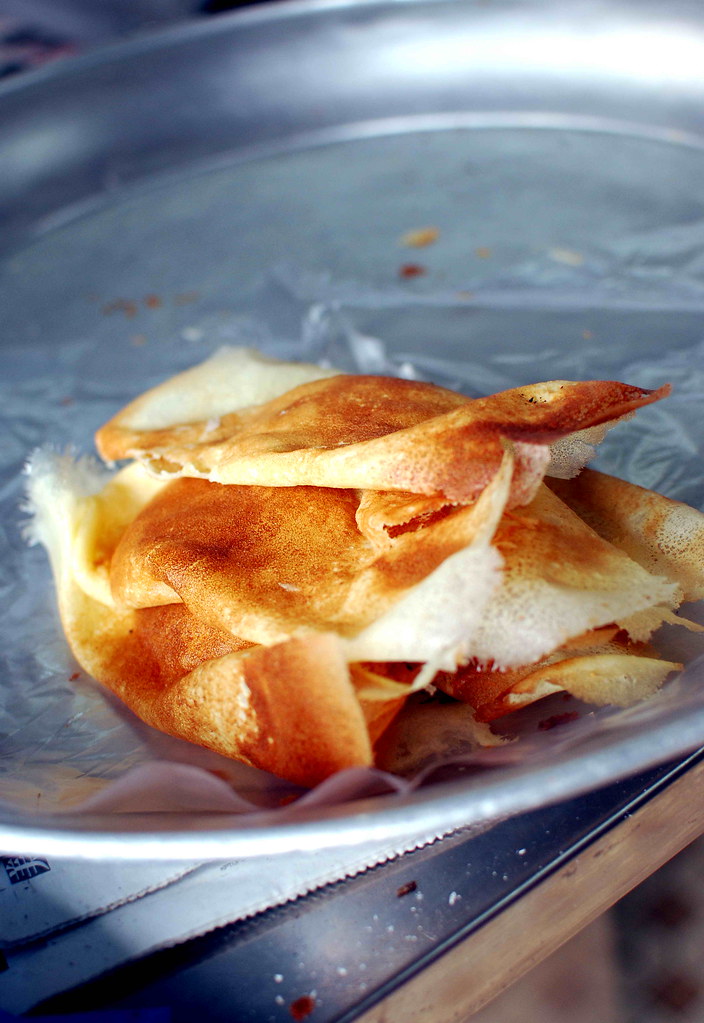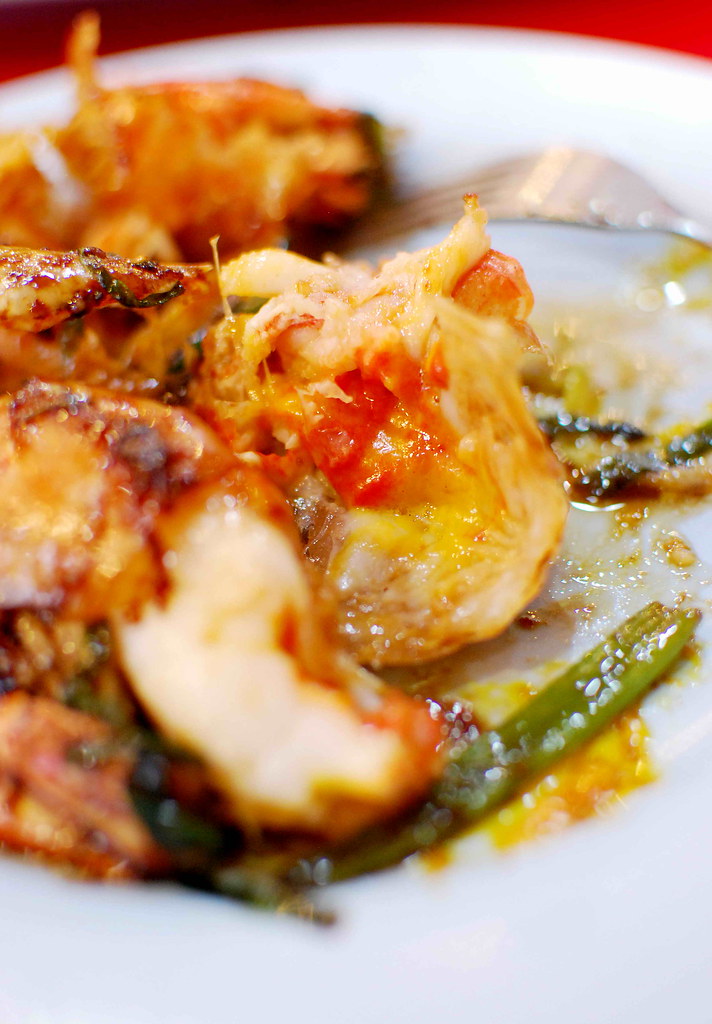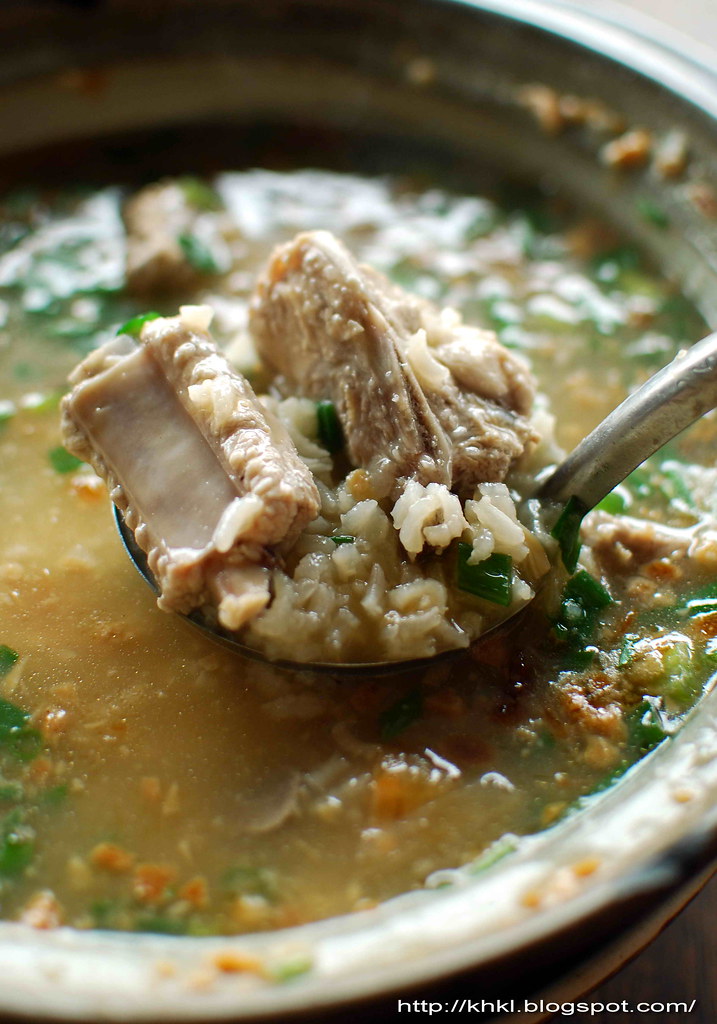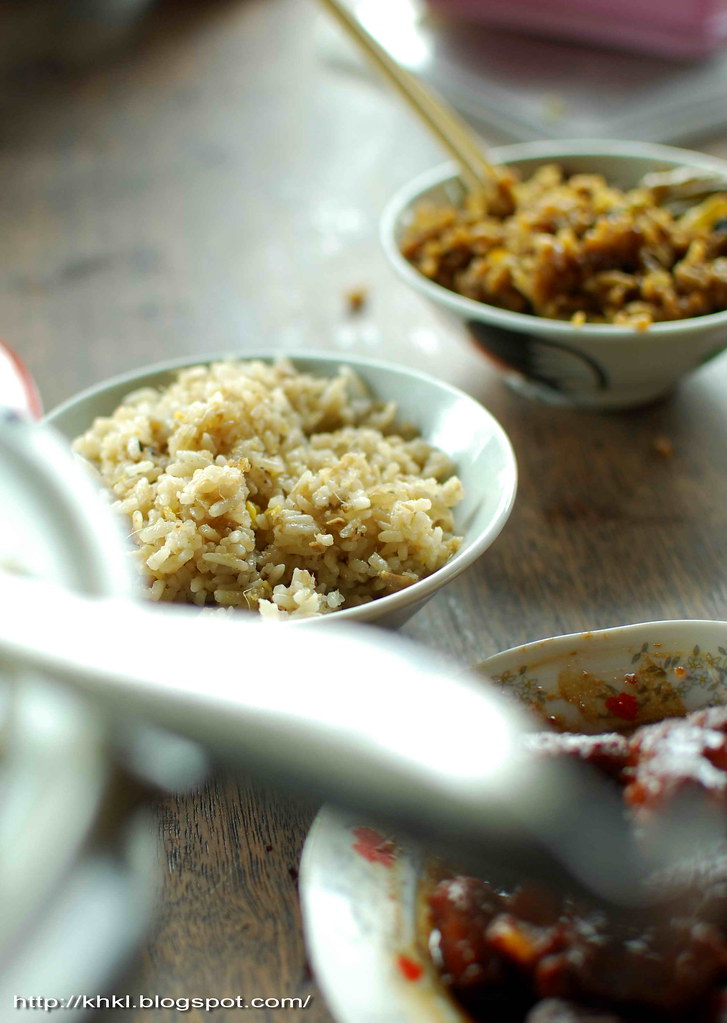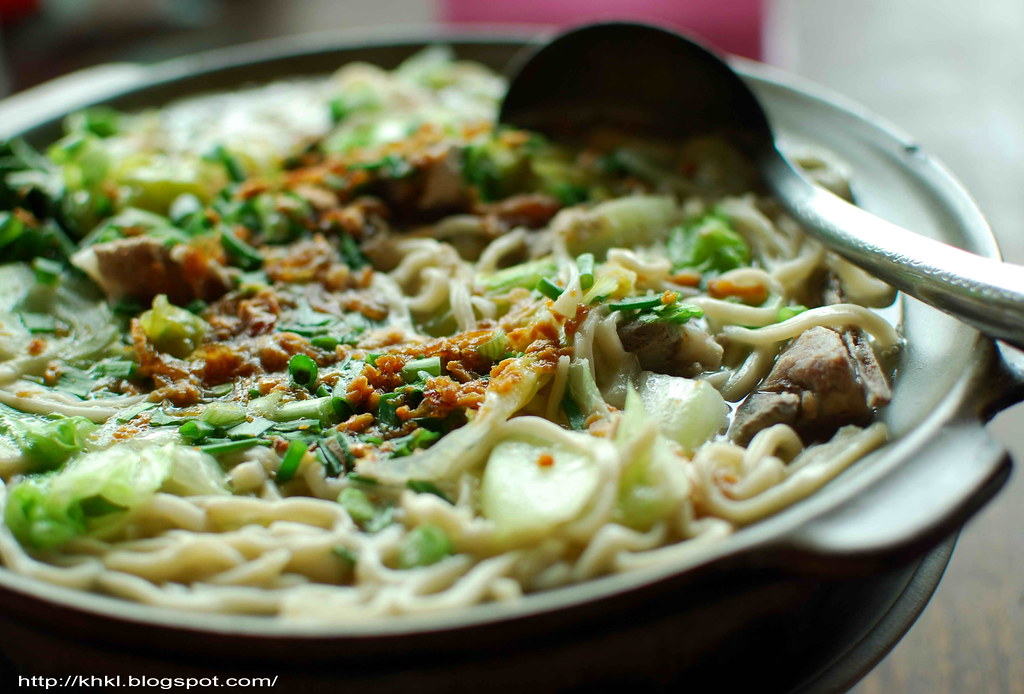...and we crossed the Penang Bridge.
We must have chee cheong fun before checking into the hotel.
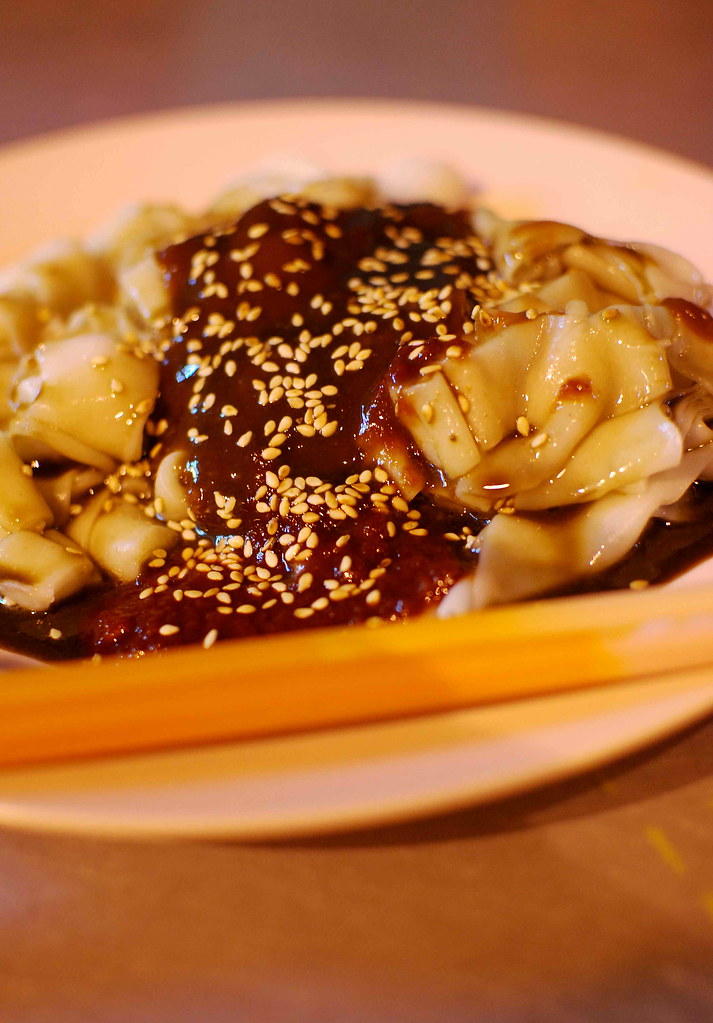
17 July 2009, 10:47 pm
Pulau Tikus Night Market, Jalan Pasar
---
Shower us lard.

18 July 2009, 01:56 am
Pork-filled Hokkien Mee - Green House Hawker Centre, Burma Road
---
Ohhh, look at the queue. We have to join in.

18 July 2009, 08:59 am
Ban Chang Kueh - Near Kafe Sin Hup Aun, Lorong Pasar (Pulau Tikus)
---
This looks good. BUY.
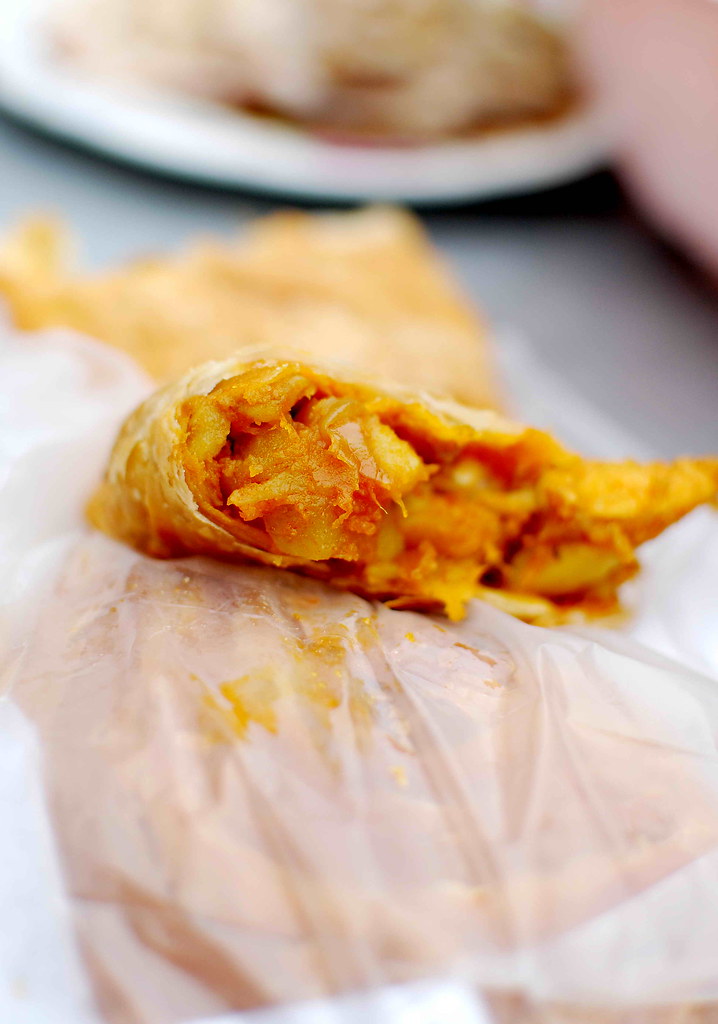
18 July 2009, 09:05 am
Adam's Chicken Curry Puff - Kafe Sin Hup Aun, Lorong Pasar (Pulau Tikus)
---
Uncle Guan, you and your banana apong rock!

18 July 2009, 11:45 am
Apong Guan - Jalan Burma
---
Hello, no spoon here. Use the shell to scrape the flesh.
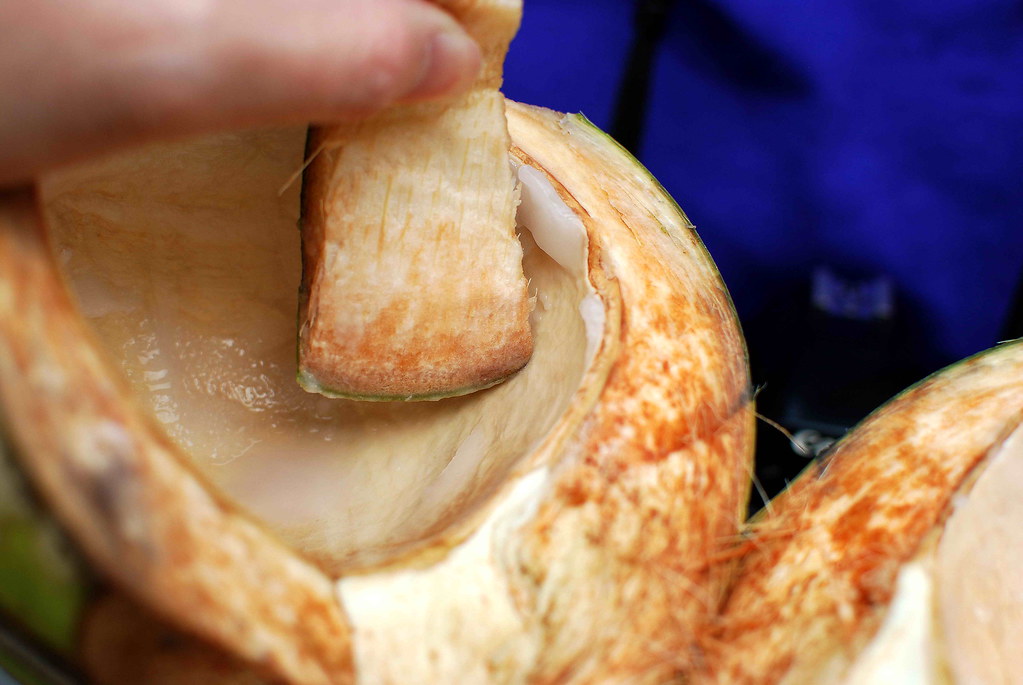
18 July 2009, 04:36 pm
Pandan flavoured coconut drink from Anba Coconut Trading - Lorong Abu Siti, Georgetown
---
Somewhere between wooden houses...and darkness.
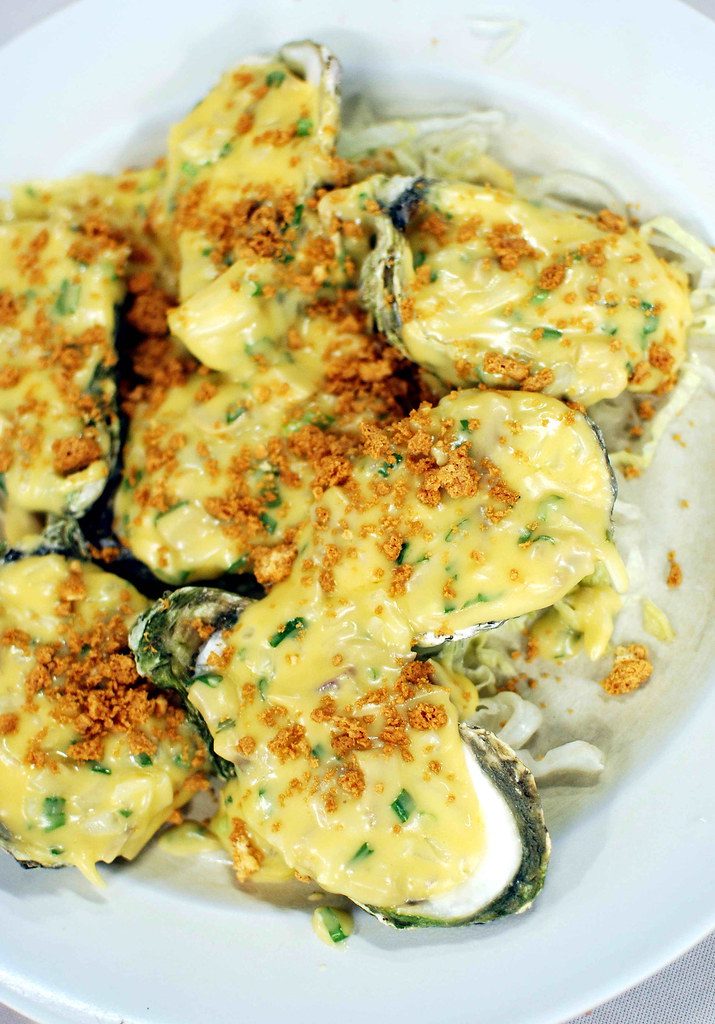
18 July 2009, 09:30 pm
Baked oysters with cheddar cheese, Fishing Village Restaurant - Teluk Bahang
---
We must have chee cheong fun before checking out of the hotel.
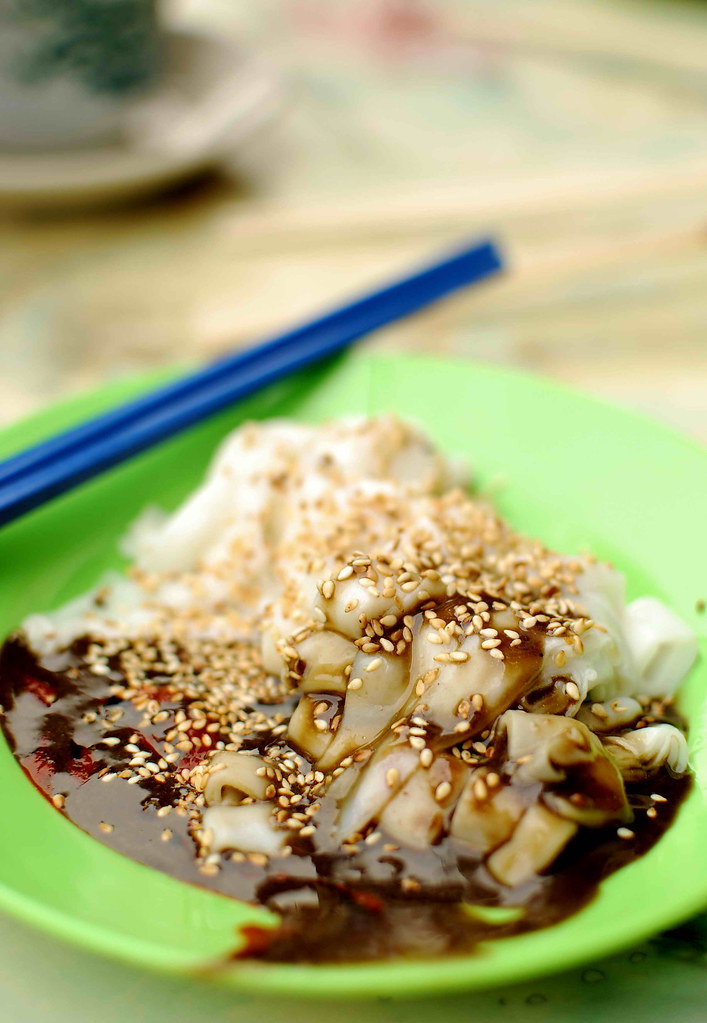
19 July 2009, 09:05 am
Chee Cheong Fun at Seow Fong Lye Cafe - Lebuh Macalister
---
How can we forget?

19 July 2009, 09:41 am
Ah Leng Char Koay Teow with duck egg and crayfish - Jalan Dato Kramat
---
There's more.

